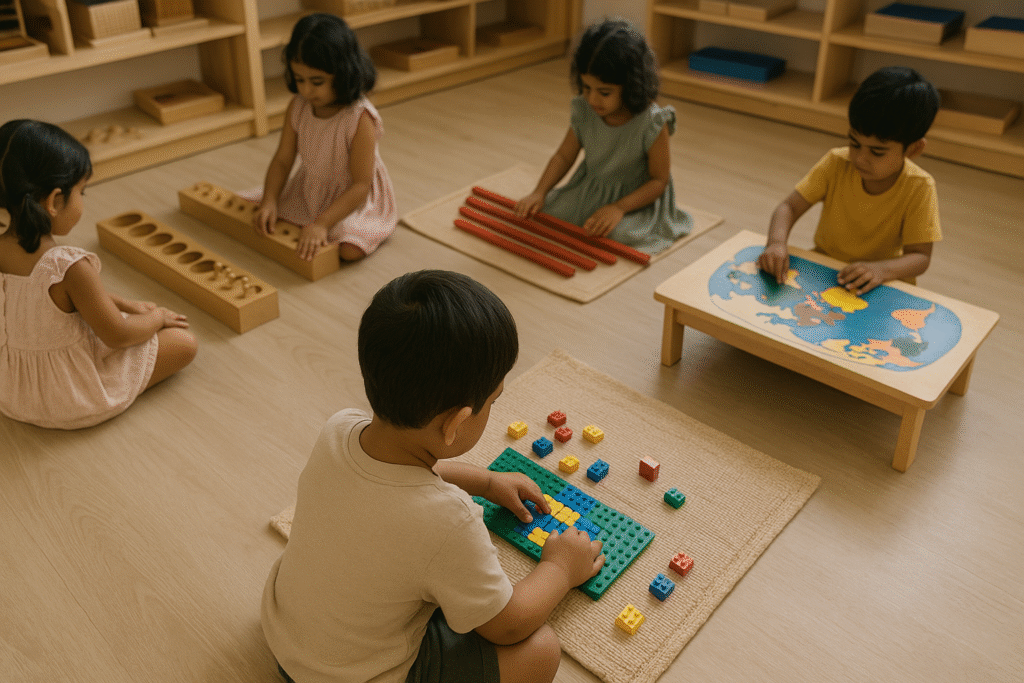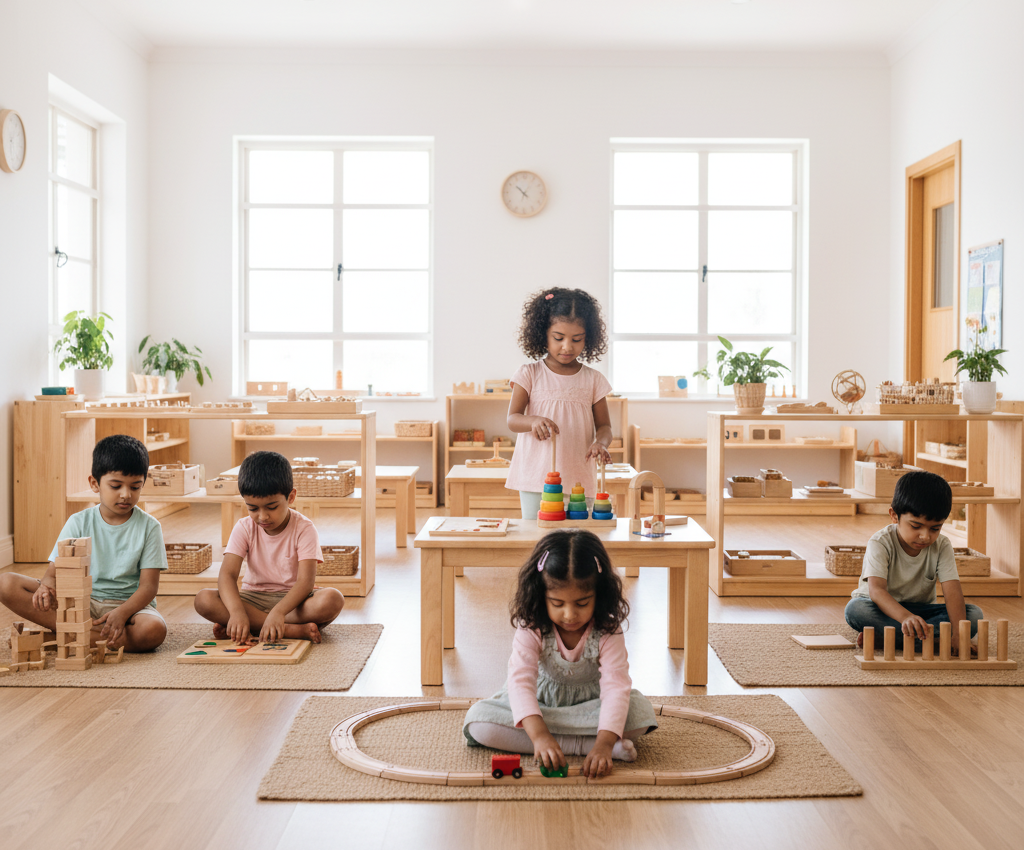MONTESSORI
The goal of early childhood education should be to activate the child’s own natural desire to learn.
WHAT IS MONTESSORI ?

The Montessori approach is a unique and deeply respected educational method developed by Dr. Maria Montessori, one of Italy’s first female physicians. Through her extensive scientific observation of children, she designed this approach to carefully nurture each child’s innate natural curiosity and intrinsic love of learning. It is a philosophy built upon the fundamental belief that children are naturally eager for knowledge and capable of initiating learning in a supportive, thoughtfully prepared environment.
For young children, this approach intentionally moves away from passive reception of information and instead focuses intensely on hands-on, tactile activities and self-directed exploration. The entire method is centered on the concept of fostering a deep, abiding independence, which is facilitated by a classroom environment that is meticulously organized and prepared to encourage children to explore, discover, and learn for themselves. This environment is a cornerstone of the philosophy, designed to meet the child’s developmental needs and to support their journey toward becoming a confident, capable individual.

How We Bring Montessori to Life in Our School

Within our school’s classrooms, the theory of the Montessori method is translated into a vibrant and dynamic daily experience where authentic learning unfolds organically through purposeful play and real-life activities. Our classrooms are designed as beautiful, accessible, and orderly spaces that invite exploration.
Children are granted the freedom to choose their work from a wide range of aesthetically pleasing, auto-educational (self-correcting) materials that are specifically designed to be age-appropriate.
These materials, which include complex puzzles for problem-solving, strings of counting beads for mathematical understanding, and an array of practical life tools like small brooms, pouring jugs, and dressing frames, are strategically selected to engage the senses and build a concrete foundation for abstract thought. Each material is presented on open, low shelves, allowing a child to independently select an activity that resonates with their current interests and developmental stage. This process of choice is central to our approach.
As a child works with, for instance, the knobbed cylinders, they are not only learning about dimensions and size but are also, without direct instruction, refining their fine motor skills, concentration, and visual discrimination. Our teachers are trained to act as gentle guides and facilitators rather than as instructors who dictate the flow of the day. They observe each child closely to understand their individual needs, interests, and pace of development. They then use this knowledge to gently introduce new materials at the perfect moment to spark curiosity and encourage further exploration. This respectful approach allows each child to learn at their own pace, to follow their unique interests deeply, and to build concentration without unnecessary interruption. The teacher’s role is to support, to encourage, and to link the child to the environment, not to lead or control the learning journey.
Benefits for Your Child
Builds Independence and Confidence: By making their own choices, completing tasks on their own, and learning to care for themselves and their environment, children develop a powerful sense of autonomy. The successful completion of a chosen activity, whether it is buttoning a vest or completing a hundred-board, provides a genuine sense of accomplishment. This cycle of effort and success builds authentic self-confidence from within, rather than relying on external praise. The child learns, “I am capable.
Encourages Problem-Solving and Critical Thinking: The very design of the Montessori materials encourages children to think critically and solve problems independently. The self-correcting nature of the materials means that a child can see for themselves if a piece does not fit or if a count is incorrect. This allows them to analyze the error, try a different approach, and correct it themselves without an adult pointing it out. This process builds resilience, logical reasoning, and the ability to think through challenges methodically.

Supports Social and Emotional Growth: The multi-age classroom environment is a community where children learn to interact with respect and grace. Older children naturally mentor and assist younger ones, reinforcing their own knowledge and developing leadership skills and empathy. Younger children look up to and learn from their older peers. Children learn to work collaboratively, to respect each other’s space and work, to resolve conflicts peacefully, and to develop a strong sense of empathy and community belonging.
Develops Fine Motor Skills and Coordination: The hands-on nature of every material is intentional. Activities in the Practical Life area, such as using tweezers, pouring water, or weaving, along with sensorial materials, are specifically designed to refine fine motor skills and hand-eye coordination. These physical skills are crucial prerequisites for later tasks such as holding a pencil for writing, which is seen as a natural extension of this motor development.
Creates a Lifelong Love for Learning: Perhaps the most significant benefit of all is that by following their own curiosity in a supportive environment, children develop a positive association with learning. They do not learn to simply pass a test or please a teacher; they learn because the process is inherently joyful and satisfying. This intrinsic motivation fosters a positive, driven attitude toward exploration and discovery that stays with them throughout their entire educational journey and life.